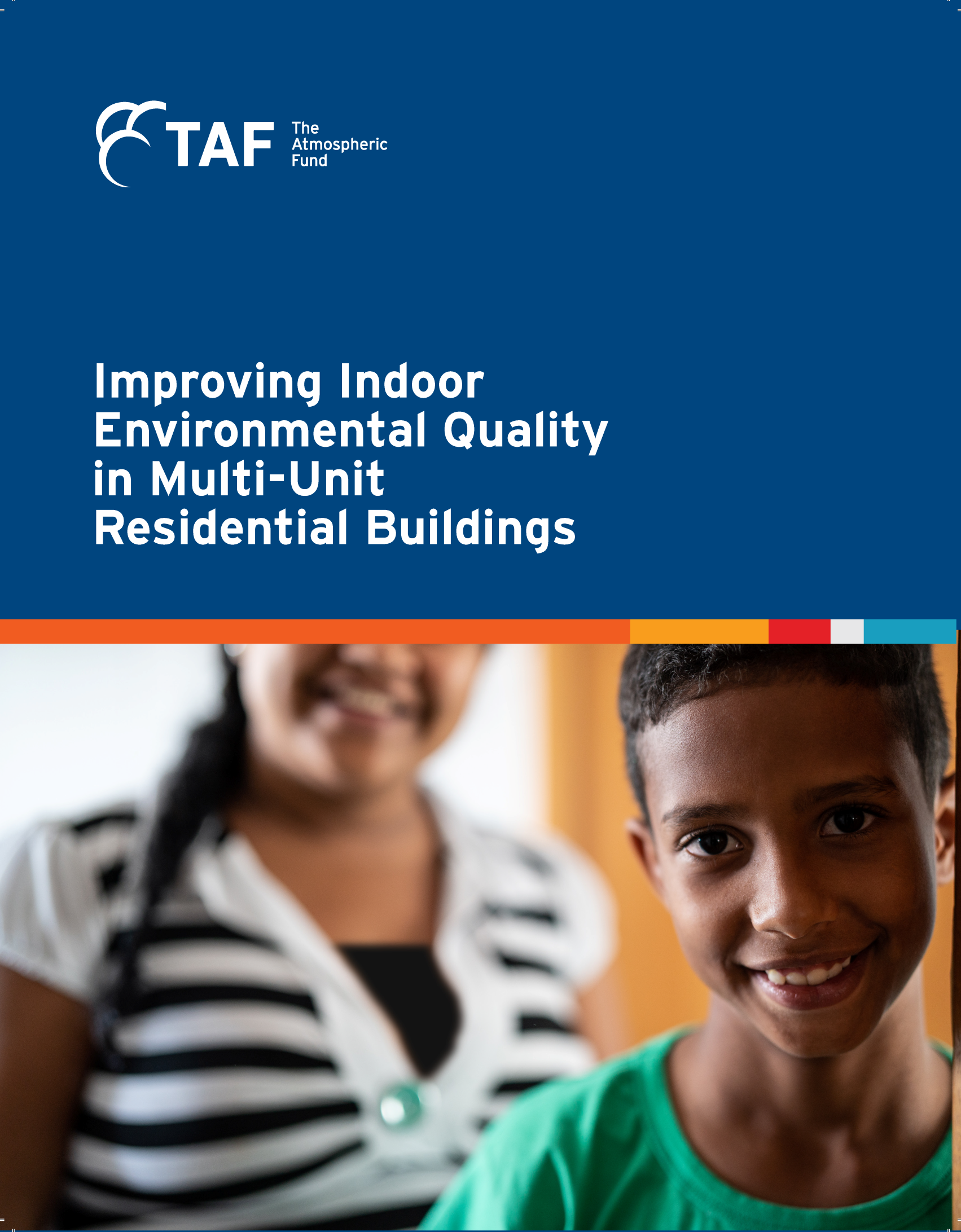May 2019. City of Toronto. Improving indoor environmental quality (IEQ) can be a benefit of undertaking an energy efficiency retrofit. Capturing this benefit requires taking a holistic approach to the retrofit, and incorporating improved IEQ as a project goal from the outset.
Improving Indoor Environmental Quality in Multi-Unit Residential Buildings shines a light on the health and job creation benefits of the retrofit program TAF undertook in partnership with Toronto Community Housing (TCH), spanning more than 1,200 units in seven buildings. The retrofits were funded using TAF’s Energy Savings Performance Agreement (ESPATM), enabling TCH to repay the cost of the retrofits out of the energy and water savings they achieved.
In the three years after the work was complete, we completed 320 resident surveys and gathered 31 million data points to get at the relationship between energy efficiency improvements and resident comfort and health. The assessment tracked indoor air temperature, relative humidity, and carbon dioxide levels, and included before-and-after household surveys, to measure living conditions before and after the retrofits and understand residents’ experiences and perceptions of the program.
The results delivered powerful proof that the retrofits at TCH’s Trethewey Tedder Apartments, Arleta Manor seniors’ residential complex in North York, and R.J. Smith Apartments in Etobicoke would have been the right thing to do, even if there hadn’t been an urgent need to reduce the buildings’ energy use, carbon emissions, and utility bills. The research revealed:
- A 44% reduction in extreme and unhealthy indoor temperatures above 26°C in winter
- A 54% reduction in residents reporting their units were too hot
- 39% fewer residents opening windows in winter, and 69% fewer using portable heaters
- A 35% drop in residents reporting winter condensation problems in their units, and 36% fewer complaints of daily dryness
- 31% fewer complaints of odours from neighbouring units, and a 28% drop in cooking odours in hallways
- Job creation through TAF’s partnership with Building Up, a Toronto organization that connects housing providers with skilled labourers from the local community
The study also looked at exposure to indoor contaminants like carbon dioxide, formaldehyde, and fine particulate matter.
Apart from the powerful health and lifestyle benefits to residents, the assessment pointed to significant cost savings and greenhouse gas emissions reductions. Over the 25-year project lifetime, TAF calculated $502,000 in annual cost savings, a 22% emissions reduction, a $6.8-million improvement in net present value, and a simple payback of 7.9 years on the money invested in the retrofits.

